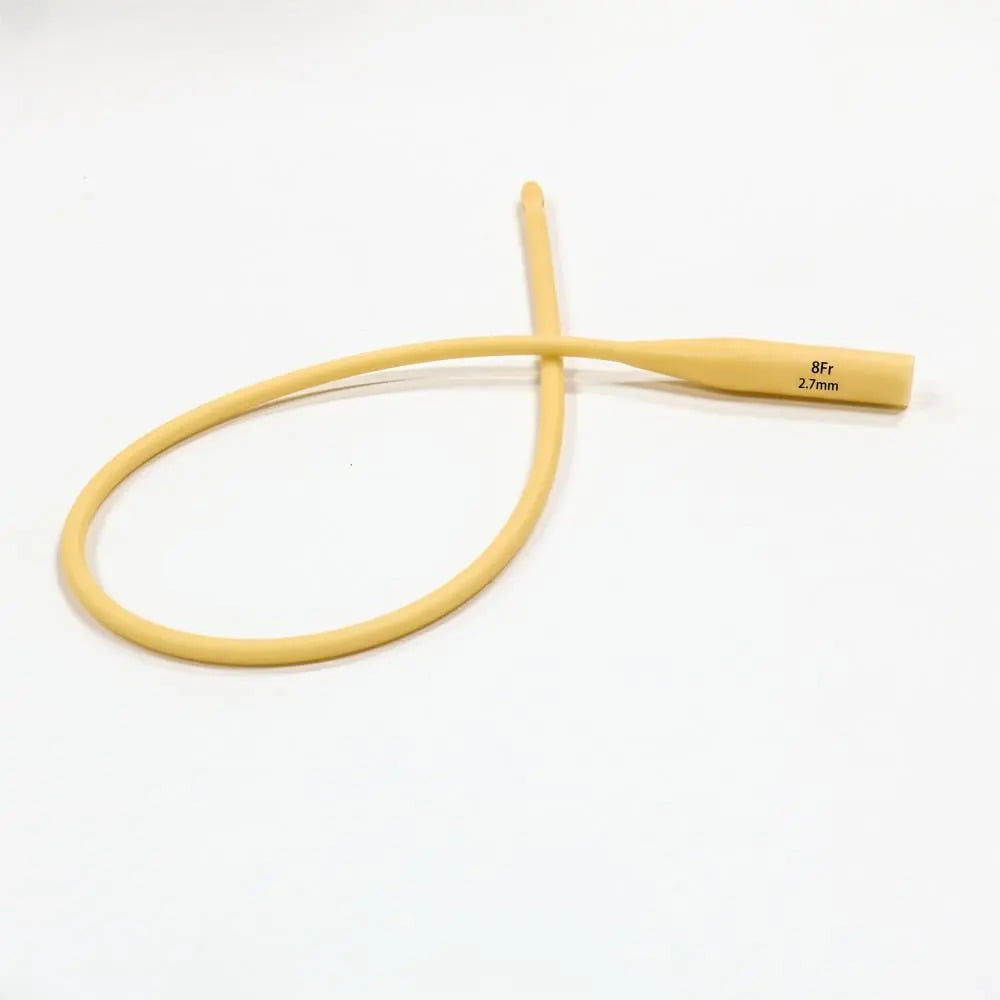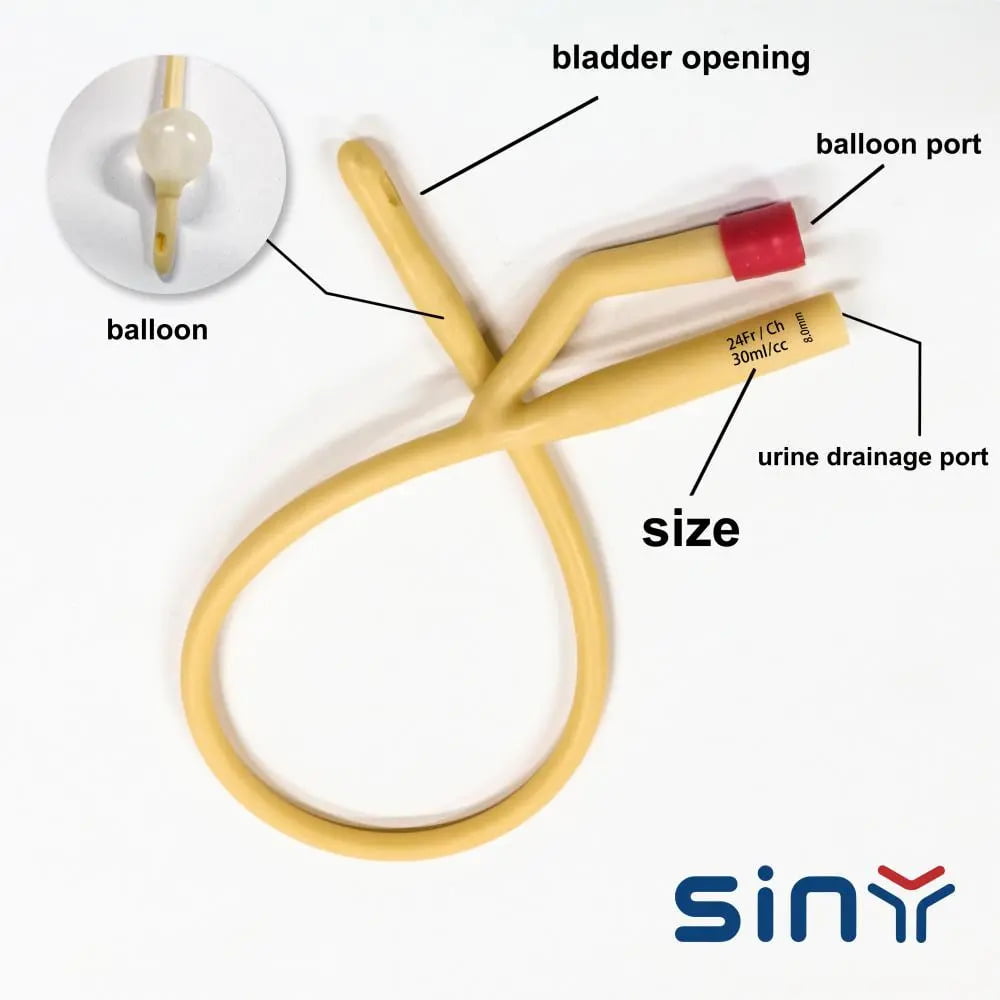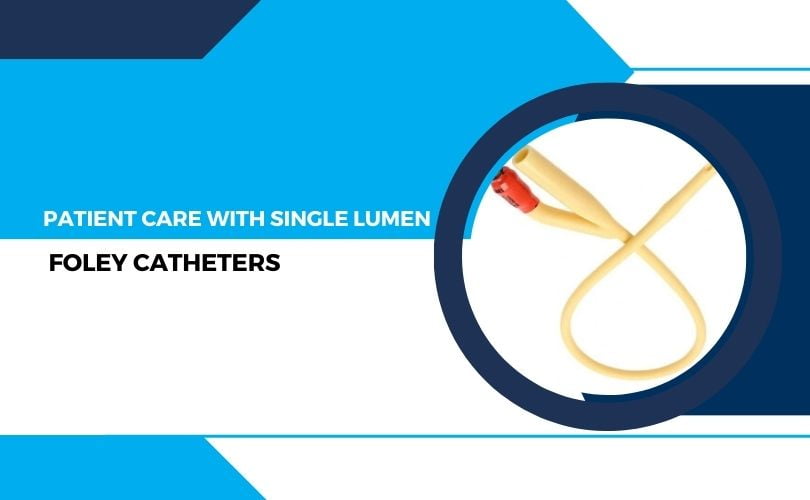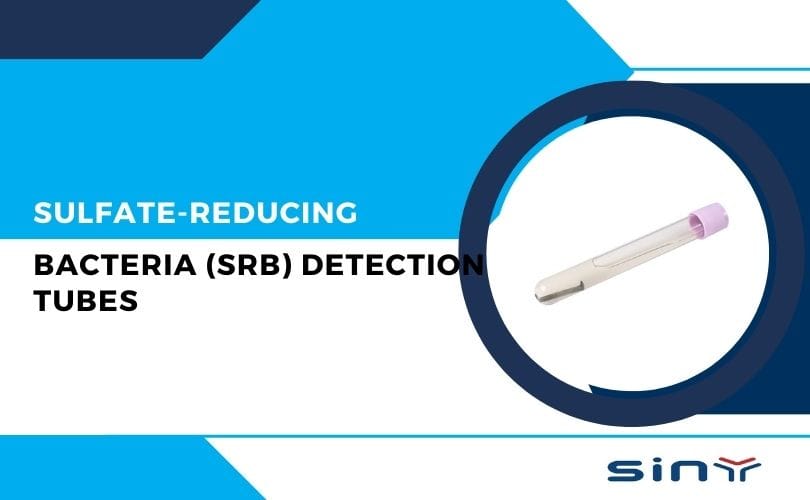Are you seeking ways to enhance patient care and comfort in healthcare facilities? Look no further! This comprehensive guide will explore the benefits and applications of single-lumen Foley catheters. With a focus on providing optimal patient care, these catheters are designed to optimize comfort, reduce the risk of infection, and minimize patient readmissions.
Single-lumen Foley catheters offer a wide range of advantages by incorporating breakthrough technology and innovative materials. From their enhanced flexibility and ease of insertion to their improved drainage capabilities, these catheters ensure patients’ highest standard of care.
In addition, we will delve into the proper techniques for inserting and maintaining single-lumen Foley catheters, enabling healthcare professionals to provide safe and effective treatment.
Whether you are a healthcare provider or simply curious about improving patient care, this guide is a must-read. Join us as we explore the world of single-lumen Foley catheters and discover how they can revolutionize patient care.
Table of Contents
- 1 Understanding Foley catheters and their role in patient care
- 2 The drawbacks of traditional double-lumen Foley catheters
- 3 Introducing single lumen Foley catheters and their advantages
- 4 Research and studies supporting the use of single lumen Foley catheters
- 5 How single lumen Foley catheters improve patient comfort and reduce complications
- 6 A step-by-step guide to inserting and managing single lumen Foley catheters
- 7 Best practices for preventing infections with single lumen Foley catheters
- 8 Training and education for healthcare professionals on single lumen Foley catheters
- 9 Cost-effectiveness and long-term benefits of using single lumen Foley catheters
- 10 Conclusion: The future of patient care with single lumen Foley catheters
- 11 Faq: Single Lumen Foley Catheter
Understanding Foley catheters and their role in patient care
Foley catheters are widely used in healthcare settings to manage urinary retention and facilitate drainage. They are especially crucial for patients who cannot empty their bladders naturally due to various medical conditions or surgical procedures. Foley catheters consist of a tube inserted into the bladder and an inflated balloon to secure the catheter.

Traditionally, double-lumen Foley catheters have been the go-to option for urinary drainage. However, they come with drawbacks that can compromise patient comfort and increase the risk of complications. These drawbacks include a higher risk of infection, discomfort during insertion and removal, and an increased likelihood of blockages.
The drawbacks of traditional double-lumen Foley catheters
On the other hand, single lumen Foley catheters have emerged as a superior alternative to traditional double lumen catheters. These innovative catheters have a single drainage channel, eliminating the need for an additional lumen. This streamlined design simplifies the insertion and removal process and reduces the risk of infection and blockages.
Research and studies have consistently shown the benefits of single-lumen Foley catheters in improving patient outcomes. They have been proven to reduce the incidence of urinary tract infections (UTIs), decrease patient discomfort, and minimize the need for catheter reinsertion. The use of Medical Men Women 3-Way Urinary Catheter has also been associated with lower rates of catheter-associated complications, such as bladder spasms and urethral trauma.
Introducing single lumen Foley catheters and their advantages
One of the key advantages of single lumen Foley catheters is their enhanced flexibility. The catheter’s design allows for greater maneuverability during insertion, reducing patient discomfort. The flexibility of these catheters also enables them to adapt to the natural movement of the bladder, minimizing the risk of injury or irritation.
Single-lumen Foley catheters offer improved drainage capabilities. The single drainage channel allows for efficient and continuous urine flow, reducing the likelihood of blockages and ensuring optimal bladder emptying. This not only enhances patient comfort but also decreases the risk of complications such as urinary retention and overdistension of the bladder.
Research and studies supporting the use of single lumen Foley catheters
Proper insertion and management of single lumen Foley catheters are crucial to ensuring patient safety and comfort. Here is a step-by-step guide for healthcare professionals:
1. Prepare the necessary equipment, including a single lumen Foley catheter, sterile gloves, antiseptic solution, and lubricating gel.
2. Explain the procedure to the patient, ensuring their understanding and consent.
3. Wash your hands thoroughly and put on sterile gloves.
4. Cleanse the patient’s genital area using an antiseptic solution.
5. Lubricate the catheter with a sterile lubricating gel.
6. Gently insert the catheter into the urethra and advance it into the bladder until urine flows.
7. Inflate the balloon with the recommended amount of sterile water to secure the catheter.
8. Connect the catheter to a drainage bag and ensure proper positioning and attachment.
9. Monitor the patient regularly, checking for signs of infection or complications.
10. Follow the recommended guidelines for catheter maintenance, including regular cleaning and blockage monitoring.
How single lumen Foley catheters improve patient comfort and reduce complications
Despite the advantages of single lumen Foley catheters in reducing the risk of infection, proper care and maintenance are essential to preventing urinary tract infections. Here are some best practices to follow:

1. Maintain strict aseptic technique during catheter insertion and management.
2. Regularly clean the catheter and the surrounding area with an antiseptic solution.
3. Encourage the patient to maintain good hygiene, including regular handwashing and perineal care.
4. Ensure proper catheter positioning and avoid kinking or tension on the tubing.
5. Use a closed drainage system to minimize the risk of contamination.
6. Monitor the patient for any signs of infection, such as fever, pain, or cloudy urine.
7. Promptly address any catheter-related complications or concerns.
A step-by-step guide to inserting and managing single lumen Foley catheters
To ensure the safe and effective use of single lumen Foley catheters, healthcare professionals should receive proper training and education. Understanding the correct insertion techniques, maintenance protocols, and infection prevention measures is crucial for optimal patient care. Hospitals and healthcare organizations should prioritize comprehensive training programs and ongoing education to equip their staff with the necessary knowledge and skills.
Best practices for preventing infections with single lumen Foley catheters
While the initial cost of single lumen Foley catheters may be slightly higher than traditional double lumen catheters, their long-term benefits outweigh the upfront investment. By reducing the risk of complications and readmissions, single lumen Foley catheters can lead to significant cost savings for healthcare facilities. Moreover, the improved patient outcomes and enhanced comfort associated with single lumen catheters contribute to overall patient satisfaction and quality of care.
Training and education for healthcare professionals on single lumen Foley catheters
Single-lumen Foley catheters have revolutionized patient care by offering numerous advantages over traditional double lumen catheters. Their streamlined design, enhanced flexibility, and improved drainage capabilities make them a superior choice for healthcare professionals seeking to optimize patient comfort and reduce complications.
The potential of single-lumen Foley catheters to improve patient care can be fully realized. Embracing this innovation in urinary catheterization is a step towards a future where patient comfort and safety are at the forefront Medical Disposable Latex Foley Catheter of healthcare practices.
Single lumen Foley catheters are a prime example of how technology can transform healthcare and enhance patient outcomes. Embrace the possibilities and revolutionize patient care with single-lumen Foley catheters.
Cost-effectiveness and long-term benefits of using single lumen Foley catheters
Proper training and education for healthcare professionals on using single lumen Foley catheters is crucial to enhancing patient care. These catheters require specialized knowledge and skills to ensure successful insertion and maintenance.
First and foremost, healthcare professionals must be well-versed in the anatomy of the genitourinary system. Understanding the structure and function of the bladder and urethra is essential for proper catheter placement. This knowledge enables healthcare providers to minimize the risk of complications such as bladder trauma or urinary tract infections.
Furthermore, training programs should teach the correct technique for inserting single lumen Foley catheters. This includes proper hand hygiene, sterile catheterization procedures, and the use of appropriate lubricants. Healthcare professionals should also be trained to recognize potential complications and promptly address them.
Ongoing education is vital to keeping healthcare professionals up-to-date with the latest Foley Catheter Disposable Sterile Latex Foley Balloon Catheter technology advancements and best practices. Regular training sessions and workshops can reinforce knowledge and improve skills, ensuring that healthcare providers deliver their patients the highest standard of care.
Comprehensive training and education for healthcare professionals are essential to successfully and safely using single lumen Foley catheters. Equipping healthcare providers with the necessary knowledge and skills can enhance patient care and minimize the risk of complications.
Conclusion: The future of patient care with single lumen Foley catheters
In addition to improving patient care, using single lumen Foley catheters offers significant cost-effectiveness and long-term benefits for healthcare facilities.
One of the key advantages of single lumen Foley catheters is their extended indwelling time. Compared to traditional catheters, single lumen Foley catheters can remain in place longer without compromising patient comfort or increasing the risk of infection. This reduces the need for frequent catheter changes, resulting in cost savings for healthcare facilities.
Moreover, Urethral Catheters Foley Catheter 3 Way are designed with infection prevention in mind. Using antimicrobial coatings and materials that inhibit bacterial growth can significantly reduce the risk of catheter-associated urinary tract infections (CAUTIs). CAUTIs cause patient discomfort and lead to increased healthcare costs and prolonged hospital stays. Healthcare facilities can mitigate these risks and improve patient outcomes by implementing single lumen Foley catheters.
Another cost-saving aspect of single lumen Foley catheters is their compatibility with closed drainage systems. Closed systems minimize the risk of contamination and infection by preventing the entry of bacteria into the catheter. This reduces the need for additional infection control measures and lowers the overall cost of patient care.
In conclusion, using single lumen Foley catheters offers short-term cost-effectiveness and long-term benefits for healthcare facilities. By reducing the need for frequent catheter changes, preventing CAUTIs, and utilizing closed drainage systems, healthcare providers can optimize patient care while minimizing costs.
Faq: Single Lumen Foley Catheter
What is a Single Lumen Foley Catheter?
A single lumen Foley catheter is a medical device used for urinary drainage. It consists of a flexible tube, typically made of silicone or latex. This catheter is inserted into the patient’s bladder through the urethra. The term “single lumen” refers to only one channel within the catheter, which allows urine to flow from the bladder into a collection bag. A small balloon at the tip of the catheter can be inflated with sterile water to anchor it in the bladder, preventing it from slipping out. Single lumen Foley catheters are commonly used to facilitate continuous urine drainage in various medical situations, such as urinary retention, postoperative care, and critical care settings.
What is a Double-Lumen Foley Catheter?
As the name suggests, a double-lumen Foley catheter has two lumens or channels within the catheter tube. In addition to the main lumen for urine drainage, it features a second lumen that allows for the inflation and deflation of a balloon near the catheter’s tip. This design is often used in specialized medical procedures, such as transurethral resection of the prostate (TURP), where the inflated balloon can help control bleeding and provide better visualization during the procedure. The dual lumens in a double-lumen Foley catheter serve distinct purposes, making it suitable for specific urological interventions.
What are the 3 Main Types of Catheters?
The three main types of catheters used in medical practice are:
Foley Catheters: Foley catheters are primarily used for urinary drainage. They can be single lumen or double lumen (as mentioned earlier) and are secured in the bladder by inflating a balloon.
Central Venous Catheters: These catheters are designed for central venous access and are inserted into large veins, typically in the chest or neck. They serve various purposes, including administering medications, providing intravenous fluids, and monitoring central venous pressure.
Peripheral Venous Catheters: Peripheral venous catheters are inserted into peripheral veins, usually in the arm or hand. They are commonly used for short-term intravenous access, such as administering medications, fluids, or blood products.
What is a Triple Lumen Foley Catheter?
A triple lumen Foley catheter is a specialized urinary catheter that goes beyond the basic single and double lumen designs. It features three lumens, or channels, within the catheter tube. Like double-lumen catheters, triple lumen Foley catheters have a lumen for urine drainage and a lumen for balloon inflation. The third lumen is often used for an additional medical purpose, such as the instillation of medication into the bladder or continuous bladder irrigation (CBI) to help prevent blood clots or clear obstructions. Triple lumen Foley catheters are employed in specific medical situations where these extra functions are necessary, such as postoperative care after certain urological surgeries.



























































